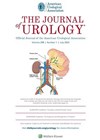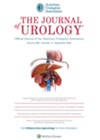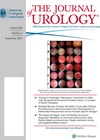
Journal Reviews
Robot-assisted ureterocalicostomy
Ureterocalicostomy was first introduced by Neuwirt (1947) and further described by Jameson et al. (1957) as an alternative procedure for repair of pelviureteric junction (PUJ) obstruction associated with an intrarenal pelvis. Performing ureterocalicostomy for PUJ repair has been suggested in...
Scrotal antegrade sclerotherapy for the adolescent varicocele
The incidence of varicocele in adolescent males is around 15%. Treatment indications include symptoms (pain) and evidence of a smaller testis. Numerous surgical techniques are described but there is a lack of randomised controlled trials (RCT), specifically in adolescents. This...
Is outpatient robotic surgery feasible in children?
Minimally invasive surgery has helped to achieve shorter hospitalisations, reduce postoperative pain and analgesia requirements and provides better cosmetic results. Robotic urological outpatient surgery has been examined in recent times in the adult population; here Neheman et al. look at...
Is robotic pyeloplasty in the under-ones as good as open repair?
Pelviureteric junction obstruction (PUJO) is a common cause of paediatric hydronephrosis. Indications for intervention include reduced renal function (<40%), symptoms (urinary tract infection or pain) and increasing dilatation. Although the Anderson-Hynes open pyeloplasty (OP) has long been the gold standard...
A tale of two cities – hypospadias outcomes
As urologists, it is important to know our results. In terms of hypospadias surgery, which is commonly undertaken after the age of one year in the UK, long-term follow-up is required to fully acquire this knowledge. Long-term urinary outcomes and...
Risk factors for BC after minimally invasive RNU
Bladder cancer (BC) after radical nephroureterectomy (RNU) has an approximate incidence of 20-50%. This contemporary multicentre study will inform the ongoing debate on risk factors for BC after minimally invasive RNU and how it may be prevented. Three hundred and...
Urinary tuberculosis and the busy urologist!
This article is a very good read for any busy urologist. When in medical school, we were taught that tuberculosis (TB) was rare in the UK and other developed countries. We have come full circle; now there are increasing cases...
Long-term risks of augmenting the bladder in spina bifida patients
Bladder augmentation is utilised to treat children with neuropathic bladders secondary to spina bifida that results in hostile urodynamics, renal deterioration and / or urinary incontinence. Whilst it is associated with an improved quality of life and low mortality, it...
Can continence and volitional voiding be achieved in bladder exstrophy?
Bladder exstrophy is a challenge to the paediatric urologist; here in the UK, repairs are now undertaken at two centres in order to concentrate experience. The ultimate aim is to achieve urinary continence and volitional voiding. In this study, John...
Is routine renal tumour biopsy associated with lower rates of benign histology following nephrectomy for small renal masses?
There has been a considerable increase in the detection of small renal masses (SRM). Approximately 20% of these turn out to be benign lesions on final histopathological analysis. Therefore upfront surgery can be overtreatment in such a group of patients....
Redo orchidopexy
Cryptorchidism, or the undescended testis, is perhaps the most common genital anomaly in males. Historical success rates are approximately 90% depending on the preoperative location and technique used. Iatrogenic cryptorchidism can also occur in up to 2% of cases following...
Ureteral clipping in children – longer term outcomes of a novel treatment
In this article, Lopes et al. report longer term outcomes of laparoscopic clipping of ureters of non-functioning kidneys or non-functioning renal moieties in duplex kidneys associated with ectopic ureter or obstructive ureteroceles. In 2014, their group published a promising preliminary...














